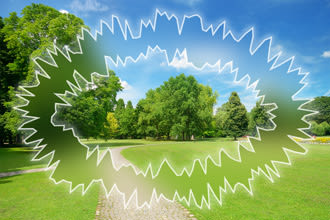How To Get Rid Of An Ocular Migraine
Ocular migraines and visual migraines: What's the difference?
- What is an ocular migraine?
- Ocular migraine and visual migraine symptoms
- What causes ocular and visual migraines?
- Treatment and prevention of ocular and visual migraines
What is an ocular migraine?
An ocular migraine is a rare condition characterized by temporary vision loss or even temporary blindness in one eye. Ocular migraines are caused by reduced blood flow or spasms of blood vessels in the retina or behind the eye.
In an ocular migraine, vision in the affected eye generally returns to normal within an hour. Ocular migraines can be painless or they can occur along with (or following) a migraine headache. Ocular migraines are also called retinal migraines.
Unfortunately, "ocular migraine" often is used to describe a much more common (and harmless) condition — called a visual migraine or migraine aura.
Visual migraines also cause temporary vision disturbances. But the vision problems caused by visual migraines affect both eyes, not just one eye, and tend to be somewhat shorter — usually around 20 minutes in duration.
Now, let's take a closer look at ocular migraines (retinal migraines) and visual migraines (migraine auras).
Ocular migraine and visual migraine symptoms
Ocular migraine symptoms generally include a small blind spot (scotoma) that affects your central vision in one eye. This blind spot gets larger, making it impossible for you to drive safely or read with the affected eye.
In some cases, the entire visual field of one eye may be affected. Generally, the episode lasts less than an hour.
Visual migraine symptoms can vary, and may include:
Visual migraines often appear suddenly and may create the sensation of looking through a cracked window. The visual migraine aura usually moves across your field of view and disappears within 30 minutes. 
-
A flickering blind spot in the center or near the center of your field of view
-
A wavy or zigzag ring of colored light surrounding a central blind spot
-
A blind spot that slowly migrates across your visual field
The symptoms of a visual migraine typically affect both eyes and last less than 30 minutes. A migraine headache may occur shortly after the symptoms of a visual migraine subside or no headache may occur.
If you're experiencing a blind spot or other visual disturbance and you're not sure if it's an ocular migraine (retinal migraine) or a visual migraine (migraine with aura), cover one eye at a time. If the visual disturbance affects just one eye, it's probably an ocular migraine. If it affects both eyes, it's likely a visual migraine.
But don't take chances. If you suddenly experience any sort of blind spot in your vision, consult an eye doctor immediately. Only an eye doctor can tell if temporary vision problems are harmless or a symptom of something serious, such as a retinal detachment or eye stroke.
What causes ocular and visual migraines?
The exact cause of an ocular migraine can be difficult to pinpoint. But it's believed they occur for the same things that cause migraine headaches.
Migraine headaches have a genetic basis, and some studies say that up to 70% of people who suffer from the disorder have a family history of migraine.
According to the World Health Organization (WHO), migraines are caused by the activation of a mechanism deep in the brain that leads to release of pain-producing inflammatory substances around the nerves and blood vessels of the head.
Studies have shown changes in blood flow to the brain during ocular migraines (retinal migraines) and migraine auras (visual migraines). But exactly why this happens remains unclear.
Common migraine "triggers" that can cause a person to have a migraine attack (both ocular migraines and visual migraines) include:
-
Certain foods (such as aged cheese and smoked meats)
-
Caffeinated drinks
-
Chocolate
-
MSG (and other processed food additives)
-
Artificial sweeteners
-
Cigarette smoke
-
Perfume
-
Bright or flickering lights
Stress and lack of sleep also can trigger an ocular migraine or visual migraine.
Treatment and prevention of ocular and visual migraines
As already noted, visual disturbances caused by ocular migraines and visual migraines typically go away within an hour.
If you are performing tasks that require clear vision when an ocular migraine or visual migraine occurs, stop what you are doing and relax until it passes. If you're driving, pull of the road, park your vehicle and wait for your vision to return to normal.
As soon as possible, see your eye doctor, family physician or a neurologist for evaluation of your migraine episodes. Your doctor(s) can let you know about the latest medicines for treating migraines, including those that may help prevent future attacks.
It's also a good idea to keep a journal of your diet and daily activities. Doing so can help you identify possible triggers of your ocular migraines (retinal migraines) or visual migraines (migraine auras).
Many migraine attacks are stress-related. You might be able to reduce how often they occur by:
-
Avoiding common migraine triggers
-
Eating a healthful diet
-
Getting plenty of sleep
-
Trying stress-busters such as yoga and massage
Migraines can be successfully managed so they are less frequent and debilitating. The first step is to see a doctor to discuss your symptoms — including vision problems — and discuss treatment and prevention options.
READ NEXT: How to get rid of a headache
Page published in February 2019
Page updated in November 2021
Medically reviewed in May 2021
How To Get Rid Of An Ocular Migraine
Source: https://www.allaboutvision.com/conditions/ocular-migraine.htm
Posted by: whitespenth.blogspot.com

0 Response to "How To Get Rid Of An Ocular Migraine"
Post a Comment